In the bustling heart of every cooking, where meals are crafted and culinary artistry takes form, there exists an unassuming hero—the colander. Often overlooked, this kitchen staple plays a pivotal role in transforming raw ingredients into delightful dishes. Whether you’re rinsing garden-fresh produce or draining pasta to perfection, the colander proves itself indispensable.
What Is A Colander And How Is It Used For Cooking?
A colander, also known as a strainer, is a perforated bowl designed to separate solids from liquids, It is a tool of simplicity yet remarkable utility, Commonly used for rinsing vegetables, draining cooked pasta, or straining broths, the strainer makes kitchen tasks efficient and mess-free. Its versatility extends far beyond its traditional uses, serving as a companion to creative culinary endeavors.
The Versatility Of The Humble Colander In Your Kitchen
The colander is more than a mere vessel for draining water; it is a multitasking marvel, From steaming vegetables to sifting flour, it adapts to the needs of every cook, A colander can even double as a makeshift sieve or act as a drying rack for delicate herbs. With a little imagination, its uses are boundless, proving it to be a cornerstone of culinary innovation.
What Makes A Good Colander?
A good colander combines durability, practicality, and ease of use. Look for sturdy construction, comfortable handles, and a stable base. The size of the perforations should match its intended purpose—small holes for grains and finer foods, larger ones for pasta and vegetables. A well-designed strainer enhances efficiency, ensuring it becomes a trusted ally in your kitchen.
Common Materials: Metal, Plastic, And Silicone
Colanders are crafted from various materials, each with distinct advantages. Metal colanders, often stainless steel, boast durability and heat resistance. Plastic options are lightweight and affordable, ideal for casual use. Silicone colanders, with their collapsible designs, offer space-saving convenience. Choosing the right material depends on your cooking habits and storage needs.
The History Of The Colander: From Ancient Times To Modern Kitchens
The colander’s origins trace back to ancient civilizations, where rudimentary strainers made of clay or woven reeds were used in food preparation. Over centuries, its design evolved, incorporating metals and innovative perforation techniques. Today, the strainer reflects a blend of tradition and modernity, a testament to its enduring utility.
Essential Uses Of A Colander In Cooking
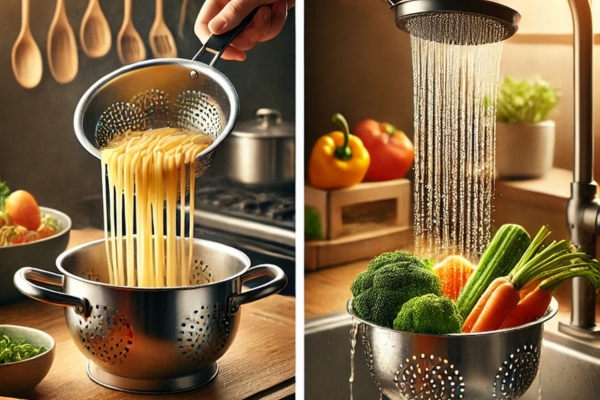
The colander is indispensable for draining liquids from boiled foods such as pasta, potatoes, and legumes, It ensures vegetables are thoroughly washed, free from grit and pesticides, For those who dabble in broths and stocks, a strainer aids in separating clear liquids from aromatics, ensuring culinary precision.
Creative Ways To Use A Colanders
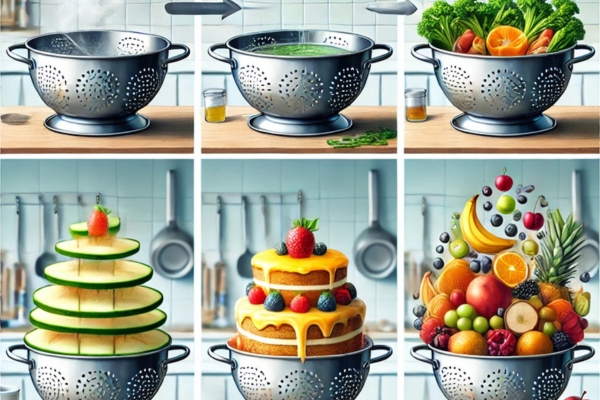
Beyond its primary functions, the colander inspires creativity. Use it as a steamer by placing it over a pot of boiling water, or as a mold for crafting no-bake desserts. It can even serve as a decorative fruit basket, blending functionality with aesthetics.
Beginner Gardening Tips With A Colanders
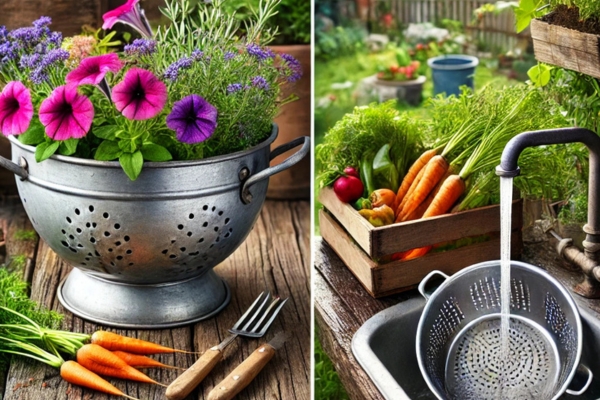
For the green-thumbed enthusiast, an old strainer can be repurposed as a planter. Its perforations provide excellent drainage, essential for healthy plant growth, It’s also handy for washing freshly harvested produce, keeping dirt and debris at bay.
Choosing The Right Colander For Your Needs
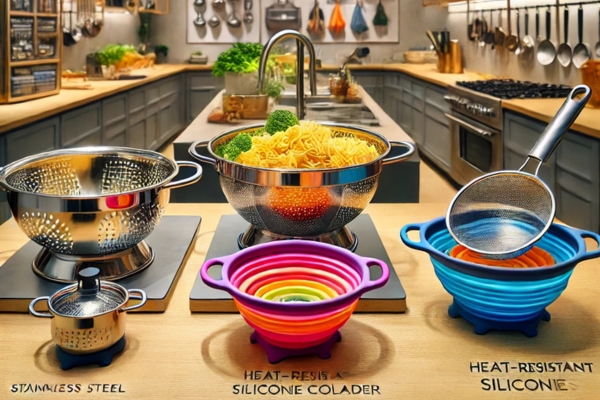
Consider your cooking style and kitchen space when selecting a colander. Large families may benefit from oversized options, while compact kitchens demand collapsible designs. Opt for heat-resistant materials if frequently dealing with hot liquids.
Maintenance And Care Tips
Regular cleaning ensures your strainer remains hygienic and functional. Rinse immediately after use to prevent food particles from drying. For metal colanders, avoid abrasive scrubbers that may scratch the surface. Store it in a dry place to prevent rust.
Colander Recipes And Hacks
Unleash the potential of your strainer with clever recipes and tricks. Use it to strain homemade yogurt, creating creamy Greek-style results. Try draining canned beans or soaking grains for fluffier textures. The colander’s utility knows no bounds.
Fun And Unconventional Uses Of A Colanders

Think beyond the kitchen—colanders can be upcycled into unique home décor, like lampshades or garden ornaments, They can also be used for creative play, inspiring young minds with imaginative possibilities.
Environmental Benefits Of Using A Colanders
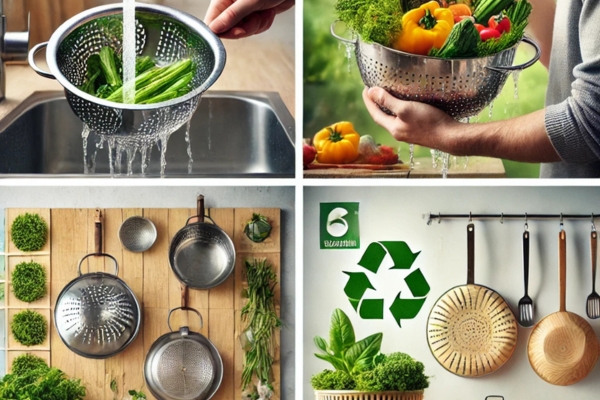
Using a colander conserves water by making rinsing tasks efficient. Upcycling old colanders reduces waste, promoting sustainable living. Investing in eco-friendly materials, like bamboo or recycled plastic, further minimizes environmental impact.
Troubleshooting Common Colander Problems
A warped colander can be reshaped with gentle heat, while stubborn stains may be removed using a baking soda paste. If rust appears, it’s time to replace metal colanders to ensure safety and hygiene.
The Colanders Role In Kitchen Safety
Colanders help prevent burns by safely straining hot liquids. They also reduce the risk of cross-contamination, ensuring raw ingredients are thoroughly washed before cooking.
Colanders Around The World
From the Italian colapasta to the Indian chalni, colanders take on regional variations reflecting local culinary traditions. These tools are an integral part of kitchens worldwide, uniting cultures through their shared utility.
Colander FAQs
What Is A Colander Used For?
A Colander Used For, strainer is primarily used in the kitchen to strain liquids from solids. Common tasks include draining water from cooked pasta, rinsing fresh fruits and vegetables, and straining broths or stocks, Its perforated design ensures efficient drainage while retaining solid ingredients, making it an indispensable tool for both amateur cooks and professional chefs. Beyond its traditional uses, it can also serve as a steamer, a sifter for dry ingredients, or even a creative vessel for washing grains.
Can You Use A Colander In The Dishwasher?
Yes, most modern colanders are dishwasher-safe, particularly those made from stainless steel, silicone, or durable plastic. However, it’s always advisable to check the manufacturer’s care instructions to ensure longevity. For colanders with decorative finishes or older metal designs, handwashing is recommended to prevent damage, Ensure the strainer is placed securely in the dishwasher to avoid warping or denting during the wash cycle.
What Foods Should You Avoid Using In A Colanders?
While colanders are highly versatile, some foods may not be suitable for their perforations. Fine powders like flour or powdered sugar can pass through the holes, making them better suited for a fine-mesh sieve, Additionally, sticky substances like melted cheese or thick batters can clog the perforations, making cleaning a hassle. When dealing with such foods, opt for alternative tools to maintain efficiency and cleanliness.
Is A Colander The Same As A Strainer?
Although the terms are often used interchangeably, strainer and strainers have distinct differences, A strainer is typically bowl-shaped with larger perforations, ideal for draining larger items like pasta or washing produce. A strainer, on the other hand, usually features a fine mesh and is designed for more delicate tasks, such as sifting flour or straining sauces for a smooth consistency. Each tool has its unique purpose, and having both in your kitchen ensures versatility.
Conclusion
The colander is more than a simple kitchen tool; it’s a versatile ally in cooking, gardening, and even creative projects. Its ability to handle diverse tasks with ease makes it an essential addition to any household. Whether you’re rinsing fresh produce, steaming vegetables, or exploring unconventional uses, the strainer proves its worth time and time again, By understanding its care, functionality, and various applications, you can unlock the full potential of this humble yet indispensable tool.
